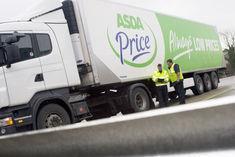
Asda has become the latest company to join an industry-led, voluntary scheme to measure and ultimately reduce carbon dioxide emissions from lorries and vans.
Members of the Freight Transport Association’s (FTA) Logistics Carbon Reduction Scheme (LCRS) now represent over 50,000 commercial vehicles.
By providing fuel usage, fleet and activity data, Asda, along with 55 other businesses in the LCRS, will help the logistics sector paint an accurate picture of its own carbon footprint; something that has never been done before.
While national carbon dioxide reduction targets commit the UK to an absolute cut in carbon dioxide emissions, LCRS focuses on producing less carbon per unit of resource or activity.
Chris Hall, national transport manager for Asda, said: “We continue to drive the focus into producing fewer, friendlier and cheaper miles and are delighted to be involved in this scheme. The opportunity to utilise this scheme to further develop our collaborative relationships in the industry and to set our agenda in relation to fleets and fuels of the future is vitally important.”
Major high street retailers, third party logistics providers and utility companies currently comprise the scheme’s participants.
In the first annual report of the scheme, emissions from the sector were tracked from 2005 to 2009 and participants in the scheme committed collectively to an eight per cent reduction in the intensity of carbon dioxide emissions by 2015 (compared to 2010 levels). Future annual reports will monitor the progress towards this target, with the next report due in late January.
The FTA’s chief economist Simon Chapman, said: “It is great to have a heavy hitter like Asda backing the scheme and it reflects how seriously the industry is taking its role in the carbon reduction agenda, after all, CO2 from freight accounts for a third of all transport emissions.
“Our first report revealed that progress has already been made through driver fuel efficiency training, use of biofuels and increases in vehicle carrying capacity. With fuel now accounting for around 40 per cent of the costs of running a truck, greater fuel efficiency that results in cutting carbon dioxide emissions is a prize every operator should be aiming for.”



